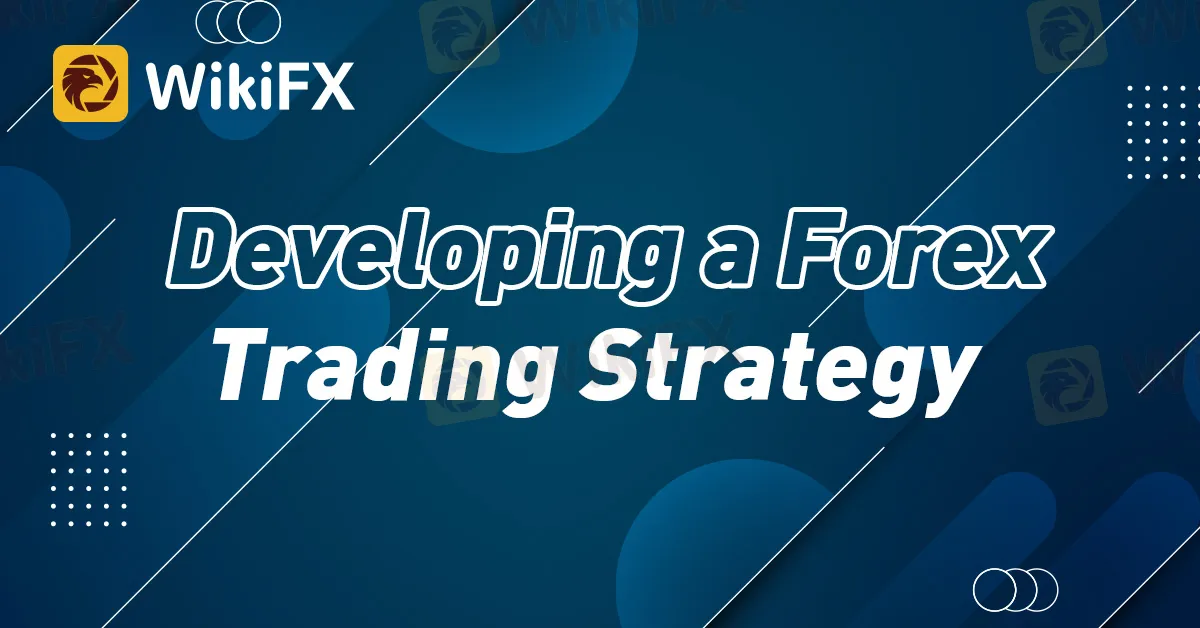简体中文
繁體中文
English
Pусский
日本語
ภาษาไทย
Tiếng Việt
Bahasa Indonesia
Español
हिन्दी
Filippiiniläinen
Français
Deutsch
Português
Türkçe
한국어
العربية
Developing a Forex Trading Strategy
Abstract:Foreign exchange, or Forex, trading is the buying and selling of currencies with the aim of making a profit from the price fluctuations. As one of the largest financial markets in the world, Forex trading has become increasingly popular in South Africa. However, to succeed as a Forex trader, it is essential to have a well-developed trading strategy. In this article, we will discuss how to develop a Forex trading strategy in South Africa and introduce you to a helpful resource called WikiFX.

Foreign exchange, or Forex, trading is the buying and selling of currencies with the aim of making a profit from the price fluctuations. As one of the largest financial markets in the world, Forex trading has become increasingly popular in South Africa. However, to succeed as a Forex trader, it is essential to have a well-developed trading strategy. In this article, we will discuss how to develop a Forex trading strategy in South Africa and introduce you to a helpful resource called WikiFX.
Step 1: Choose a Trading Style
The first step in developing a Forex trading strategy is to choose a trading style that suits your personality, risk tolerance, and goals. The most common trading styles are day trading, swing trading, and position trading. Day trading involves opening and closing trades within a day, while swing trading involves holding trades for a few days or weeks. Position trading, on the other hand, involves holding trades for months or even years.
Step 2: Analyze the Market
The second step is to analyze the Forex market to identify potential trading opportunities. This can be done using technical analysis, fundamental analysis, or a combination of both. Technical analysis involves studying past price movements and identifying patterns that can be used to predict future price movements. Fundamental analysis, on the other hand, involves analyzing economic, political, and social factors that can affect the value of a currency.
Step 3: Develop a Trading Plan
Once you have identified potential trading opportunities, the next step is to develop a trading plan. This should include entry and exit points, stop loss and take profit levels, and risk management strategies. It is essential to stick to your trading plan and avoid making impulsive decisions based on emotions.
Step 4: Backtest Your Strategy
Before using your trading strategy in a live market, it is crucial to backtest it using historical data. This will help you identify any weaknesses in your strategy and refine it for better results. Backtesting can be done using specialized software or manually.
Step 5: Monitor and Adjust Your Strategy
Once you start using your trading strategy in a live market, it is essential to monitor its performance and adjust it if necessary. Forex trading is a dynamic market, and what works today may not work tomorrow. Regularly reviewing and adjusting your strategy will help you stay ahead of the game.
Introducing WikiFX
WikiFX is a comprehensive Forex broker database that provides information on regulated brokers worldwide. It also includes user reviews and ratings, making it easier for traders to choose a reliable broker. Additionally, WikiFX offers a range of educational resources, including trading strategies, market analysis, and trading psychology. You can access WikiFX online, and it is completely free to use.
In conclusion, developing a Forex trading strategy in South Africa requires careful analysis, planning, and testing. By following the steps outlined in this article, you can develop a strategy that suits your trading style and helps you achieve your financial goals. Additionally, resources like WikiFX can provide valuable information and tools to support your trading journey.

Disclaimer:
The views in this article only represent the author's personal views, and do not constitute investment advice on this platform. This platform does not guarantee the accuracy, completeness and timeliness of the information in the article, and will not be liable for any loss caused by the use of or reliance on the information in the article.
Read more

The Hidden Checklist: Five Unconventional Steps to Vet Your Broker
Forex broker scams continue to evolve, employing new tactics to appear credible and mislead unsuspecting traders. Identifying these fraudulent schemes requires vigilance and strategies beyond the usual advice. Here are five effective methods to help traders assess the legitimacy of a forex broker and avoid potential pitfalls.

Why Do You Feel Scared During Trade Execution?
Trade execution is a pivotal moment for traders. It is when analysis turns into action, and potential profits or losses become reality. However, for many traders, this moment is accompanied by fear. Why does this happen, and how can you address it?

Pros and Cons of Choosing Unregulated Forex Brokers
Discover the pros and cons of unregulated forex brokers, explore risks, benefits, and key features, and learn how to evaluate their credibility with the WikiFX app.

5 Questions to Ask Yourself Before Taking a Trade
Before executing any trade, traders should pause and ask themselves critical questions to ensure they are making rational and well-informed decisions. Here are five questions to help you reflect on your strategy, manage risk, and control emotions before entering the market.
WikiFX Broker
Latest News
Why is there so much exposure against PrimeX Capital?
Russia to Fully Ban Crypto Mining in 10 Regions Starting January 1, 2025
Two Californians Indicted for $22 Million Crypto and NFT Fraud
Macro Markets: Is It Worth Your Investment?
WikiFX Review: Is Ultima Markets Legit?
Colorado Duo Accused of $8M Investment Fraud Scheme
What Impact Does Japan’s Positive Output Gap Have on the Yen?
RM62k Lost Investment Scam After Joining XRP Community Malaysia on Telegram
Victims of Financial Fraud in France Suffer Annual Losses of at Least €500 Million
SEC Warns on Advance Fee Loan Scams in the Philippines
Currency Calculator


